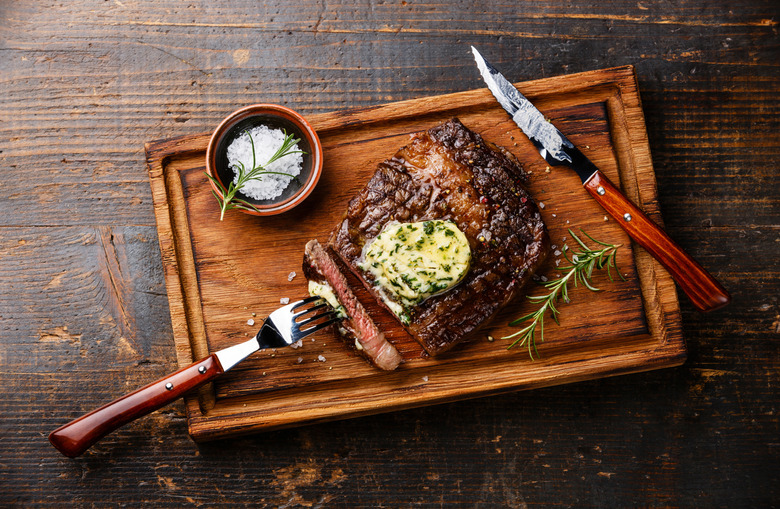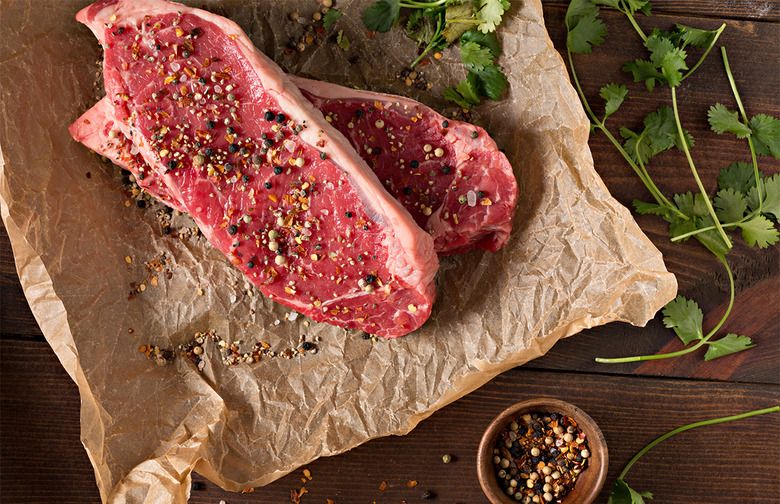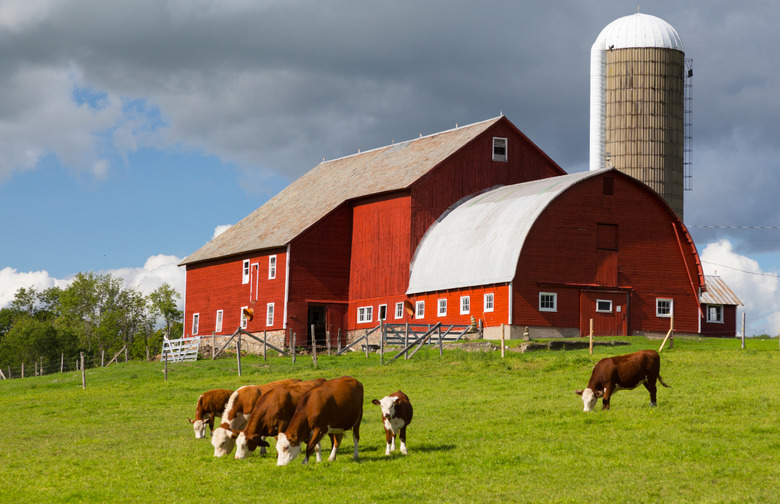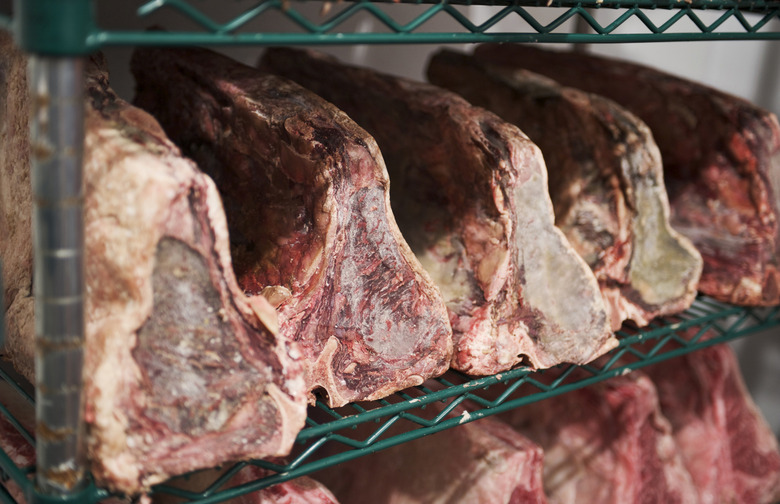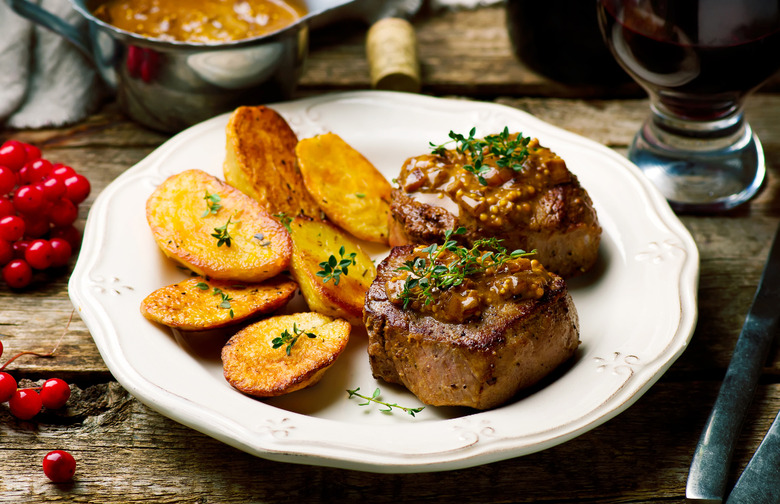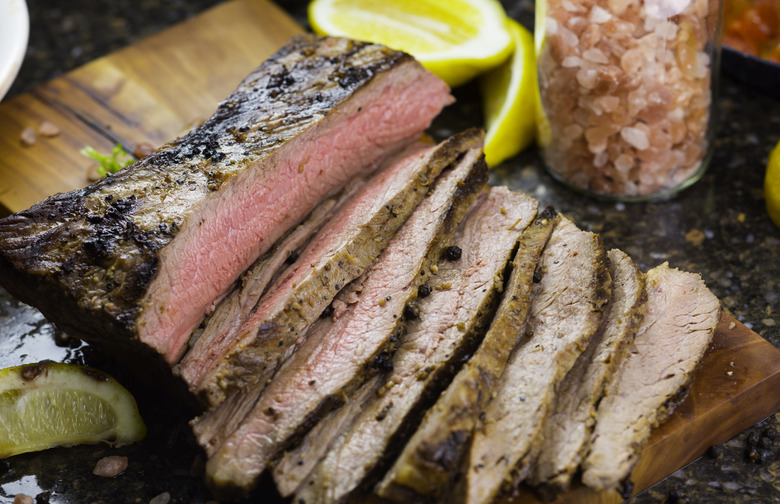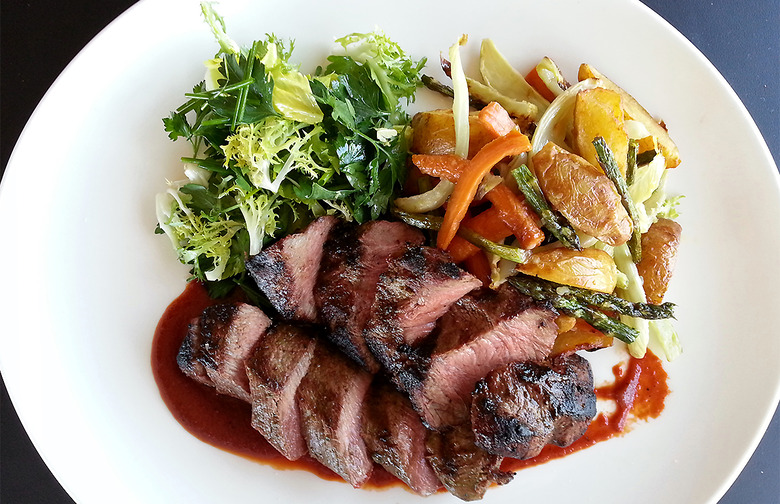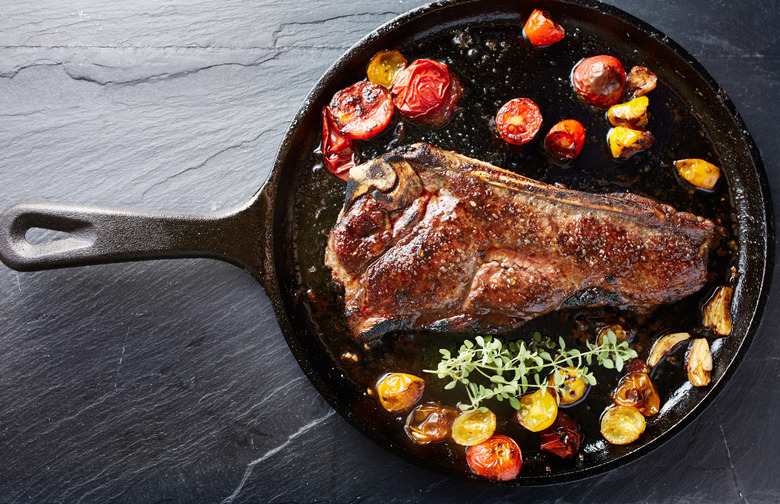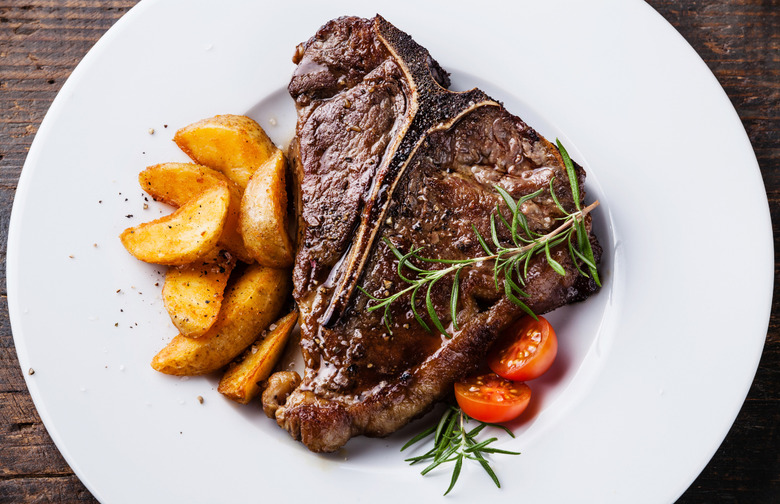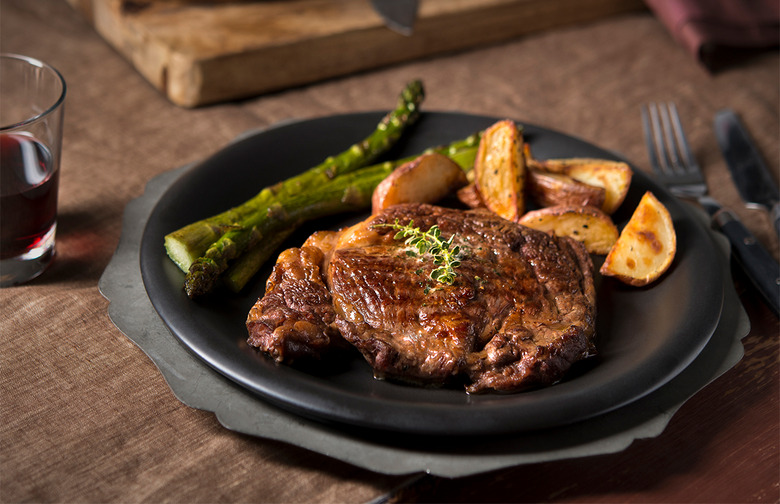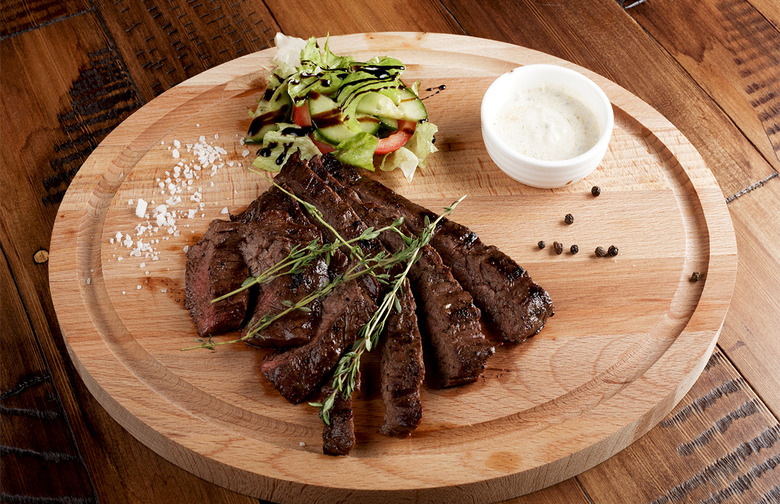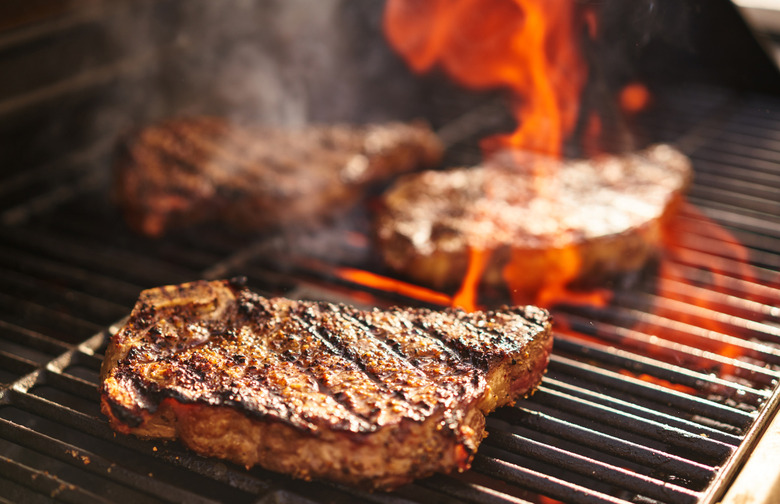The Ultimate Steak Guide Gallery
For many, ordering a perfectly cooked steak is joy on a plate — but trying to recreate the same at home can often be rather intimidating. Which cut should you choose? Should it be grass-fed, or is grain-fed better? And after all the choices have been made in the supermarket, what is the best way to cook a steak at home, and how to you cook the perfect steak?
Don't let a little bit of uncertainty stop you from tackling the task of cooking steak yourself. Armed with the right knowledge and a few simple tips, you will find that recreating that perfect steakhouse dish in your own home is totally achievable.
We scoured the internet as well as The Daily Meal archives for the most essential steak cooking tips and stories. From understanding dry aging and the different grades of beef to learning the difference between the most popular cuts of steak and more, this guide will help you cook the perfect steak.
Whether you are a first-time steak cooker who doesn't know where to start or a pro looking to revisit the basics, this ultimate guide to steak is a perfect place to begin.
Prime, Choice, or Select?
There are three main grades given to beef by the U.S. Department of Agriculture — USDA Prime, USDA Choice and USDA Select — but what do those categories actually mean?
Prime is the highest quality of beef and is produced from young, well-fed beef cattle. It is well marbled, which is an important factor to consider when choosing a steak. Marbling is a term that refers to the streaks of fat or fat dispersion within a cut of meat. The more marbled a cut of meat is, the more tender it will be and the more flavor it will have. Marbling in steak also varies from cut to cut, with rib-eye generally being much more marbled than, say, sirloin.
Choice beef is the second highest grade of beef. It has less marbling that USDA Prime but is still a high quality product.
Select beef is generally the leanest option, so expect uniform cuts of meat with less marbling that might be slightly lacking in the flavor and juiciness of the higher grades.
Grass-Fed vs. Grain-Fed
There's a lot of discussion about the difference between grass-fed and grain-fed beef, but what exactly does it boil down to?
All cattle are initially grass-fed. Most of the beef sold and eaten in America these days is grain-fed — by which we really mean grain-finished, which means that after their time grazing in pastures, cattle are moved to feedlots and fed grain (often a mixture of soy and corn) in order to gain weight rapidly before they are slaughtered.
Though not all grain-finished beef is of poor quality — some cattle are fed high-quality grain mixtures — conventionally raised cattle are frequently given hormones and drugs in order to grow faster.
Grass-fed beef tends to be of a higher quality and is healthier than grain-fed beef, being lower in fat (and therefore lower in calories) and higher in levels of antioxidants, beta carotene, and vitamins A and E.
In terms of flavor, grass-fed beef is often described as having a more intense, meatier, even gamy flavor that is praised by many of its proponents.
Click here to read further reasons grass-fed beef is better.
What Is Dry-Aged Steak?
All meat benefits from some degree of aging, which generally takes place between the time of slaughter and the time a piece of meat is sold and eaten.
Dry aging is a process that involves storing and aging beef at near-freezing temperatures (either on a rack or hanging) to alter the flavor and texture of the piece of meat. Two things change when meat is dry aged: Moisture is evaporated, and natural enzymes in the beef break down the connective tissue in the muscle. These changes help to develop flavor (less moisture means the beef tastes "beefier"), make the steak taste better, and make the meat a lot more tender. As the meat ages, a crust is formed by the growth of certain (harmless) mold species, protecting the meat within until it is trimmed away before being cooked. If the idea of a mold exterior freaks you out, just think about cheese for a moment and let the similarities between cheese and dry-aged beef sink in to mollify any concerns you might have.
Many high-end steakhouses and restaurants dry age their own meat, but it is a technique that is almost never seen in supermarkets. Never fear, though — if you are interested in dry-aged meat, you can take matters into your own hands and do it yourself!
Wet aging of beef, a rather new technique, is often the preferred method because it costs less than and takes much less time than dry aging — days rather than weeks. It involves aging in a vacuum-sealed bag, which means no moisture is lost and therefore no weight is lost in the process — a big plus for anyone selling by weight (which is most purveyors).
In terms of flavor, most of us are more familiar with the slightly metallic and fresh taste of wet-aged beef rather than the deeper, earthy, nutty flavor of dry-aged beef.
For a Dry-Aged Steaks With Grilled Salsa recipe, click here.
Cuts of Steak: Filet Mignon
Considered the "king of steaks," the filet mignon is an expensive and very tender cut of steak taken from the smaller end of the tenderloin. This is a soft, buttery, fork-tender cut with very little fat and a mild flavor that some chefs and steak connoisseurs look upon with disdain and consider overrated.
For the best ways to prepare filet mignon, click here.
Cuts of Steak: Flank
The flank steak cut comes from the lean underbelly of the cow, and has very little marbling, making it perfect for quick-searing over a high heat (think fajitas). Tough silverskin, which is connective tissue, can be a problem with this cut, so be sure to ask the butcher to remove any that you see. This cut is a great candidate for delicious marinades. To avoid ending up with a tasty but tough steak, make sure to slice against the grain.
Click here to check out this Beer Marinated Flank Steak With Blue Cheese Chimichurri recipe.
Cuts of Steak: Hanger
Hanger steak, once rather obscure, has become increasingly popular in recent years and is appearing on menus all over America. It is taken from the front of the belly of the steer and offers a wonderful savory flavor and pleasant tenderness. Right off the cow, this cut tends to be covered in a layer of silverskin and tough sinew, but most butchers sell it already trimmed. Because of its soft texture and open grain, this cut is particularly good at taking on flavors from rubs and marinades.
Click here to check out this Grilled Samuel Adams Boston Lager Marinated Hanger Steak recipe.
Cuts of Steak: New York Strip
The New York strip is your perfect, mid-tier steak. It might have a bit more chew than its pricier relative, the filet mignon, and less marbling than the full-flavored porterhouse, but it is also not as expensive as either of those cuts. This is a great weeknight dinner steak cut to turn to when you need to satisfy a craving and don't want to spend all your money before the weekend!
Click here for the Bison NY Strip Steak recipe.
Cuts of Steak: Porterhouse
The New York strip is your perfect, mid-tier steak. It might have a bit more chew than its pricier relative, the filet mignon, and less marbling than the full-flavored porterhouse, but it is also not as expensive as either of those cuts. This is a great weeknight dinner steak cut to turn to when you need to satisfy a craving and don't want to spend all your money before the weekend!
Click here for the Bison NY Strip Steak recipe.
Cuts of Steak: Rib-Eye
Also known as a tomahawk (if it is bone-in) or cowboy steak (and sometimes as a Delmonico, though that's a story for a different time) the rib-eye is arguably one of the most prized steak cuts. Though not as tender as filet mignon, an abundance of fat means a rib-eye is full of intense, meaty flavor. If you are serious about steak, then this is the cut to choose.
For a Salt and Pepper Rib Eye recipe, click here.
Cuts of Steak: Skirt
Like flank steak, skirt steak is a great economical cut to turn to. With nice marbling and excellent flavor (think rib-eye flavors in a slightly toothsome package) skirt steak is one of the cheapest cuts you can find. The most important thing to remember when you are cooking skirt steak is to do so as quickly as possible on a volcanic heat and then slice it as thinly as you possibly can against the grain.
Click here and try this Honey Soy Grilled Skirt Steak recipe.
How to Cook a Steak
Once you have gone through the lengthy process of deciding which steak to buy — and what (if any) marinades to use — there's nothing left to do but cook! But how do you cook the perfect steak?
Before you begin, make sure that the steak comes to room temperature for about an hour before cooking. This will ensure that it cooks evenly. Rule No. 2: Make sure your pan (cast iron is ideal for cooking steaks) or grill is super-hot before you put your steak in or on it. A cold pan will ruin everything and a hot pan will ensure you get a lovely, delicious crust. Make sure you season generously, as now is not the time to be afraid of salt.
Once the steak is cooked and out of the pan, it is important not to dig in right away. Leave your steak to rest for half of its cooking time to give the meat's natural juices a chance to evenly distribute throughout the steak. Cooking is a stressful process — you want to let the steak relax a bit. Cut in too soon, and all the flavor and moisture will immediately run out all over the place and be lost.
When it is finally time to slice, make sure you go against the grain. Slicing against the grain, or against the alignment of the muscle fibers, ensures that each mouthful is as tender as possible—but if you are using a tougher cut of steak, there are some great ways to make cheap steak tender and delicious.
More from the Daily Meal:
How to Grill the Perfect Steak
Best Steak Grilling Tips From the Pros
19 Marinades That Will Up Your Steak Game
25 Best Grilled Chicken Recipes
